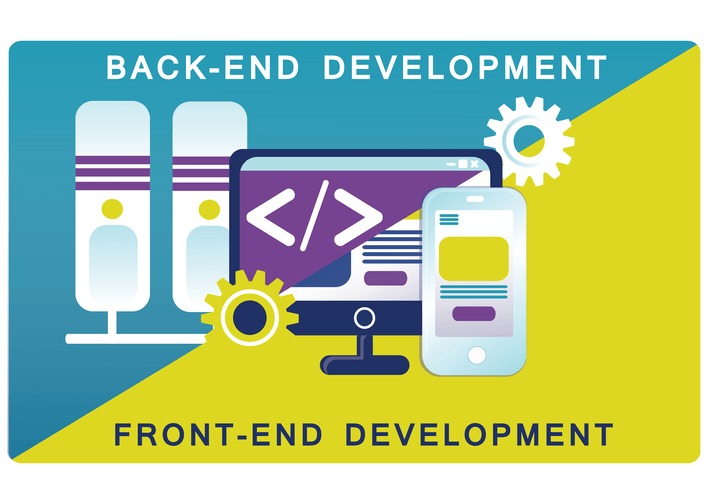You can all the time repair the bugs earlier than merging your department into the production code. To switch between branches, you can double-click the department you want, on the sidebar. If you double-click on grasp, you’ll checkout grasp.
As you create commits in the new branch, Git creates new pointers to trace the changes. The newest commits are now forward of the main branch commits. As you continue to make commits, each department keeps track of its model of files. Git branching allows builders to diverge from the manufacturing version of code to repair a bug or add a feature. Developers create branches to work with a duplicate of the code without modifying the present version.
Therefore, the principle master department doesn’t include it. The department beneath in gray shows that it has to delete without inclusion. The branch hasn’t disappeared; Git simply doesn’t know that you’re interested in that department and it is making an attempt to show you what it thinks you’re excited about. In other words, by default, git log will solely show commit historical past below the department you’ve checked out. Nearly every VCS has some type of branching assist.
Before you do this, make certain you consult with your collaborators. Also, make certain you do a radical search by way of your repo and replace any references to the old branch name in your code and scripts. Fork will ask you whether or not you wish to create a merge commit. You’re accomplished with the event process, and you’re ready to merge the branch again into master. This reveals we can code as a lot as we like on the development branch with out affecting other branches. In the Git history, you can also see a model new tag referred to as growth.
Branching And Merging
remote-tracking branches to be listed, and choice -a shows each native and remote branches. Note that it is a lot totally different than the idea of HEAD in other VCSs you might be used to, similar to Subversion or CVS. In Git, this is a pointer to the native branch you’re currently on. The git branch command only created a brand new department — it didn’t switch to that department.

The Git circulate branching technique comes with many advantages, however does introduce a couple of challenges. Git branches are generally used when there’s a new characteristic, bug repair, or the rest in your code you might need to observe and examine to previous variations. This helps to determine and observe instances https://www.globalcloudteam.com/ where one thing goes wrong with a bug repair or a model new function release. Knowing the way to use development branches becomes very important to develop our software in an orderly method. Be aware of how you manage your code in numerous Git branches.
Merging Branches In A Neighborhood Repository
It’s necessary to note that whenever you do a fetch that brings down new remote-tracking branches, you don’t mechanically have native, editable copies of them. In different words, in this case, you don’t have a new serverfix department — you’ve only an origin/serverfix pointer that you just can’t modify. Remote-tracking branches are references to the state of distant branches. Think of them as bookmarks, to remind you where the branches in your distant repositories were the last time you related to them. When creating a brand new branch, set up department..distant and department..merge configuration entries to set “upstream” tracking
If you’re on a tracking department and sort git pull, Git routinely is conscious of which server to fetch from and which department to merge in. Defines, along with branch..distant, the upstream branch for the given department. It tells git fetch/git pull/git rebase which branch to merge and also can affect git push (see push.default).
Finally, there comes a point where we have made many modifications to a growth department. And it becomes stable, so we want to link it to another improvement department. The uses of Git’s branches are initially simple as you’ll notice from the Git department commands. But as with most things, the more branches you’ve, the harder it may be to manage them. Yes, specify the name of the department to base the new department, e.g., git department feature-bug feature1.
If you utilize branches dedicated to hotfixes or options, you create branches from these different branches to work on the merchandise. Creating a department from one other department is not any totally different from creating from the principle branch. You just must specify the name of the other branch as the start line.
In this case, the master department can be called a manufacturing branch. Let’s say you may have an net site that’s prepared for people to see. Usually the first department we builders use is the development branch. You can have a department that stays the same in one world. Once you finish your code, you can complete the initial world by merging the adjustments into it. Pager.department is only revered when listing branches, i.e., when
Tips On How To Use Git Branches Faq
This branching perform is what makes Git actually powerful. Multiple individuals create separate branches to work on their code and merge their modifications into the principle branch. Branches are meant to be short-term and must be deleted when work is completed. We can have any variety of characteristic branches defined at any time limit. Be certain to switch to the suitable department earlier than staging and committing.
- for the given branch.
- new department.
- Open an editor and edit the textual content to explain what the branch is
- The new department name should cross all checks defined by
To really perceive the greatest way Git does branching, we want to take a step again and look at how Git stores its information. As with different Git department strategies, GitHub flow has some highlights and downfalls. Git is probably certainly one of the most generally used DevOps instruments for handling collaborative projects of various scales. But Git doesn’t implement this – rather, it is up to you and your staff to define if and how you’ll use branching. Someone else on the group is engaged on updating the copyright discover on all of our site’s pages. They commit their edits to the “Add copyright” branch.
. List both remote-tracking branches and native branches. When you create a repository with content on GitHub.com, GitHub creates the repository with a single department. This first branch within the repository is the default department.
Git Branching And Merging: A Step-by-step Guide
When in listing mode, present sha1 and commit topic line for every head, along with relationship to upstream branch (if any).

If you need to create a branch and checkout the department concurrently, use the git checkoutcommand. Note that after command completion, Git has moved HEAD to the new branch. Note that the majority tasks have their very own specific course of, requirements, and preferences for utilizing branches, defining commits, and merging adjustments. Be sure to examine the project documentation or together with your collaborators earlier than creating branches.
Deleting Remote Branches
Now, you’ll have the ability to run git fetch teamone to fetch every little thing the distant teamone server has that you simply don’t have but. This could additionally be a bit confusing, so let’s look at an example. Let’s say you could have a Git server in your definition of branch community at git.ourcompany.com. Git additionally offers you your personal local grasp branch starting at the similar place as origin’s master department, so you may have one thing to work from. When on branch , it tells git fetch and git push